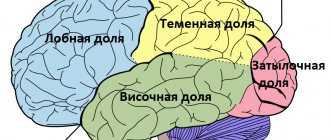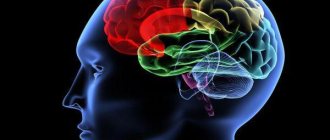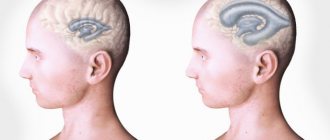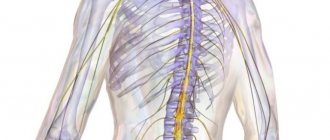The modern world is ruled by logic and the left hemisphere of the human brain. However, you cannot do without the right hemisphere: it is responsible for both non-standard decisions in business and motivation (necessary, for example, for losing weight); with its help, advertising convinces buyers, and a lover conquers his chosen one. How else is the harmonious work of both hemispheres of the brain useful in the modern world?
Today, there is more and more scientific evidence that the capabilities of the brain are fully revealed only when both hemispheres are harmoniously involved in the work. The left or logical hemisphere deals with words, numbers, logic, analysis, lists and sequences. The right hemisphere - also called the creative hemisphere - is responsible for images, rhythm, color, fantasies, dreams and spatial perception.
Over time, the West has shifted to relying exclusively on the left hemisphere of the brain, as this has traditionally been the path to success. For creative thinking, we need imagination, and therefore “access” to the right hemisphere of our brain.
In the early stages of education, children use both sides of their brains, integrating numbers and rhythm, words and pictures, logic and music, learning and play, shapes and color. Using these techniques, they absorb knowledge at incredible speed. They learn to walk and talk, read and write.
What happens next? Traditionally, we decide that at about the age of seven, a child is old enough, so instead of color picture books, which affect the whole brain, we make him read black and white books, instead of games, he must sit still and listen to the teacher. This marks a transition to primarily logical thinking, which is a huge mistake.
True, in the era of personal computers, this error is apparently beginning to be corrected, and quite unexpectedly. Programs actively use color and graphics. Computer games make the whole brain work. Young people demand images, movement, music from their computers. This helps prevent a final slide into the world of purely logical thinking.
What makes the brain unique?
For a century, scientists have been trying to answer these questions.
:
- What determines the level of intelligence?
- By what criteria can you define a genius? And in general, is this possible?
- What can be associated with congenital and genetic mental disorders?
- Is it possible to form new memories using electrical influence on brain tissue?
Once autopsy became a common practice, the task of physicians and scientists became easier. After all, they had a huge amount of material at their disposal, but it was here that the research stalled. It turned out that modern research methods cannot reveal at least some reliable pattern between the materials being studied.
Many theories were put forward, but they were all destroyed by the harsh reality of statistical data. To this day, there are no universal brain indicators that could be used to determine a person’s future potential.
Cause of pain
It happens that a person’s left hemisphere of the brain hurts. Why is this happening? The most common cause is migraine. In this case, the pain is localized precisely on the left side of the head. The duration of this condition also varies – from several hours to a couple of days. Among the main causes of this condition, scientists identify the following:
- Physical fatigue.
- Stress.
- Heat and dehydration.
- Tension of the falciform septum of the brain.
- Diseases of the trigeminal nerve, its inflammation.
- Insomnia.
However, if a person periodically has pain in the left hemisphere of the brain, it is still worth seeking medical advice. After all, this symptom is not always harmless. Often, headaches in a certain part of the head indicate tumors, thrombosis or other serious problems that can threaten not only the health, but also the life of the patient.
How does the nervous system work?
But it would be a crime to say that humanity has not advanced at all in this direction. People far from medicine may be interested in how scientists were able to determine what exactly each part of the brain is responsible for? Did they really conduct monstrous experiments, removing or damaging certain areas? No, it’s a feature of the functioning of our brain
thing is:
- At a certain point, a nerve impulse is formed.
- This signal is an electrical charge. Too weak a stimulus to cause harm, but strong enough to convey information.
- Nervous tissue is excited at the point where the impulse is located, and since it is transmitted to neighboring cells, the site of excitation also passes.
- The current level of technological progress helps to record the electrical activity of the brain using an electroencephalogram.
So all you need to do is connect the subject to the equipment and set him a few simple tasks:
- Read or write something.
- Talk to someone around you.
- Try to solve a math problem.
- Draw a portrait or any other drawing.
- Make a joke.
It turned out that each time excitement arises in different departments. There is no one universal zone that would be responsible for all of the above actions. The research was not carried out for the sake of research itself; the data are of utmost practical importance. After all, thanks to them, we can guess which functions will be disrupted with certain brain damage.
Perfect balance?
So what then can be considered a psychological norm? Someone may answer right away: equilibrium, balanced development of both hemispheres. But how can this be achieved and what will human culture look like in this case? It's hard to imagine. Perhaps it will not contain outstanding discoveries and creations, but will something qualitatively new arise? This encourages us to continue to think about the mysteries of the brain.
Author: Pavel Gurevich, Doctor of Philological and Philosophical Sciences, Professor
The material used photographs belonging to shutterstock.com
What is the left hemisphere of the brain responsible for?
In the left hemisphere there are centers responsible for
:
- Ability to read and write.
- Perception of speech in its literal sense.
- Data analysis, including mathematical data.
- Perception of mathematical signs and symbols.
- Consistent logical thinking.
If a person completely lacks the functions that are assigned to the left hemisphere, it is difficult to call such an individual a full-fledged member of society. But look at the list, it all consists of some formalities. It's as if we're talking about a robot.
Yes, the ability to read, write and speak are basic skills that every person needs. It is also difficult to live without logic and consistency. But where are the emotions, experiences, imagery of speech? Apparently another department is responsible for this.
Harmonious work
It should also be mentioned that both hemispheres of the brain need to be developed simultaneously. After all, only a diversified person is talented, more competitive in the labor market and unique in his capabilities. Moreover, there are people who are called ambidextrous. Both hemispheres of their brain are equally developed. They can perform all actions equally well with both their right and left hands. Such people do not have a pronounced, leading hemisphere; both parts of the brain are involved in the work equally. This state can be achieved through hard work and training.
Left and right hemisphere of the brain
| Left hemisphere | Right hemisphere |
| Control over the entire right half of the body. | Control over the entire left half of the body. |
| Tendency to be formal and stereotypical in one's actions. | Flights of fancy and abstract thinking, the ability to “break boundaries.” |
| Logic and cynical calculation. | Feelings, emotions and imagination. |
| The ability to break a problem or situation into separate stages and try to solve them in a certain sequence. | Comprehensive coverage of any problem. An attempt to resolve it immediately, as something holistic and complex. |
No one will have enough options from only one column for a normal, fulfilling life. Each person is a complex synthesis of various qualities:
- We inherited some of them.
- The other part was formed during life under the influence of external factors.
- We developed the rest on our own, using willpower.
Hemorrhagic stroke
Hemorrhagic stroke is intracerebral hemorrhage. What happens to a person in this case? What consequences can a hemorrhage in the left hemisphere of the brain have?
- Movement disorders. If the hemorrhage occurs on the left side of the brain, the right side of the patient's body will be affected first. Difficulties may arise when walking and coordinating. Unilateral movement disorders are medically called hemiparesis.
- Speech impairment. As mentioned above, it is the left hemisphere of the brain that is responsible for the perception of symbols and numbers, as well as reading and writing. When a hemorrhage occurs in this particular part of the brain, a person begins to have difficulty not only speaking, but also perceiving the words of others. There are also problems with writing and reading.
- Processing information. In case of hemorrhage on the left side of the head, a person stops thinking logically and processing information. Understanding becomes inhibited.
- Other symptoms not related to the activity of the left hemisphere. These may be pain, psychological disorders (irritability, depression, mood swings), problems with bowel movements and urination.
Disability after hemorrhage is high and accounts for approximately 75% of all cases. If the cause of this problem is not determined in time, repeated hemorrhage is possible, which can even lead to the death of the patient.
How to form your own personality?
Emotionality and logic are two good traits, but a strong predominance of one of them can ruin the life of a person and everyone around him. What's wrong with a lover of pure emotions? Regular tantrums. Inclined to analysis and logic? Constant tediousness and emotional coldness.
If you notice that one type of thinking is clearly expressed in you, while another is almost not manifested, try to distract yourself. Get to know the other side of life that you haven't touched yet. Such contacts will contribute to the stimulation and development of the non-dominant half of the brain.
So what is the left hemisphere of the brain responsible
:
- Will solve any mathematical problems with ease.
- He will begin to develop a love for numbers, memorizing dates and numbers from an early age.
- In childhood he will show himself as a reserved child, perhaps a little withdrawn.
- Emotional manifestations may not be as pronounced as those of others.
- Sometimes he will not understand metaphors and allegories. The “sarcasm” sign will come in handy.
- He can always make a plan to solve a problem.
The classic right- or left-handed version of thinking practically does not occur; there are always inclusions and additions. You need to know that the left hemisphere of the brain is responsible for formal logic
. But this information is not so valuable, because despite the dominance of one half of the brain, the other still plays a huge role in shaping your personality.
basic information
At the very beginning, it is worth saying that the human brain consists of two hemispheres - the right and left. These parts are separated by the cerebral cortex, but information exchange occurs through the so-called corpus callosum. To illustrate the work of both hemispheres, we can draw a fairly simple analogy with a computer. So, in this case, the left side of the brain is responsible for sequential execution of tasks, i.e. it is the main processor. The right hemisphere can perform several tasks simultaneously, and it can be compared to an additional processor that is not the master.
The left hemisphere thinks logically.
The right helps to create new things, generate ideas, as it is now fashionable to say. However, you can be a mathematician with a well-developed left hemisphere and still not invent anything new. Or you can be a creator and throw out ideas left and right and not implement any of them due to the inconsistency and illogicality of your actions. Such people also exist. And they only lack one thing: working on improving their brain, bringing it into a harmonious state. Meanwhile, psychophysiologists have long developed a system of exercises for this. Music is good in this regard, for example, for pianists. They were already made harmonious from early childhood. After all, the most important tool for brain development is your hands. Acting with two hands, a person develops both hemispheres.
So, let's move on to the exercises. Many of them are well known to us from childhood. 1. “Ear-nose.” With our left hand we take the tip of the nose, and with our right hand we take the opposite ear, i.e. left. At the same time, release your ear and nose, clap your hands, change the position of your hands “exactly the opposite.” I tried it, it worked better when I was a child. 2. “Mirror drawing.” Place a blank sheet of paper on the table and take a pencil. Draw mirror-symmetrical designs and letters with both hands at the same time. When doing this exercise, you should feel your eyes and hands relax, because when both hemispheres work simultaneously, the efficiency of the entire brain improves. 3. "Ring". We move our fingers one by one and very quickly, connecting the index, middle, ring, and little fingers into a ring with the thumb. First, you can do it with each hand separately, then with both hands simultaneously.
Now let's remember physical education lessons. No wonder we were forced to do exercises in which we had to reach our right leg with our left hand and vice versa. They also develop our hemispheres and help them work in harmony.
Neurolinguistic programming, abbreviated NLP, is remarkably helpful in developing the hemispheres of the brain. I liked one of the NLP techniques called “First Aid”.
It helps relieve emotional stress, improves performance, develops attention, thinking and interhemispheric connections. This exercise is difficult and yet interesting.
I explain the procedure. In front of you lies a piece of paper with the letters of the alphabet, almost all of them. Under each letter the letters L, P or V are written. The upper letter is pronounced, and the lower letter indicates movement with the hands. L - the left hand rises to the left side, P - the right hand rises to the right side, V - both hands rise up. Everything is very simple, if only it weren’t so difficult to do it all at the same time. The exercise is performed in sequence from the first letter to the last, then from the last letter to the first. The following is written on the piece of paper.
Consequences of malfunctions in the left half of the brain
If pathological changes occur in the left hemisphere, the brain centers do not work correctly. As a result, a person partially or completely loses abilities that are regulated by the left-sided parts of the brain. Violations are manifested by symptoms:
- Loss of speech skills.
- Deterioration of mental activity and cognitive abilities.
- Biased assessment of external information, inability to draw logical conclusions.
- Distortion of the function of self-awareness. The person does not feel motor and speech disorders and does not strive for recovery.
With severe lesions of the brain tissue on the left side of the head, right-sided paresis, paralysis and deterioration of sensorimotor skills develop - complexes of movements mastered to a state of automatism.
Social hemisphere
One of the most actively developing areas in the study of brain asymmetry and behavior has been the study of “social lateralization”—the asymmetric perception of individuals of one’s own species. Regulation of social behavior is one of the most complex and multicomponent functions performed by the brain of vertebrates. Various aspects of social behavior may involve processes carried out by both the left and right hemispheres. However, it is the right hemisphere that is justifiably called “social” in the scientific literature, because it plays a dominant role in controlling most social reactions in various species of vertebrates, including humans []. In visual recognition of familiar individuals of one’s own species, for example, the right hemisphere of the brain is predominantly involved, and such asymmetry has been identified in both mammals and birds []. The predominant role of the right hemisphere in the manifestation of aggressive reactions aimed at individuals of their own species is known in amphibians, reptiles, birds and mammals. Social lateralization is reflected in animal behavior, both experimentally and in nature. If a fish fry is placed in an aquarium with a mirror wall, then it will examine the “other individual,” i.e., its own reflection, primarily with the left eye (directing information to the right hemisphere). Similarly, feral domestic horse stallions prefer to keep their opponent in the field of view of their left eye during fights [].
Duel of wild horse stallions. During aggressive interactions, each of them prefers to look at the enemy with his left eye
Features of the hemispheres
The symmetrical sections of the hemispheres provide movement and specific sensitivity equally. However, such averaging does not apply to higher cortical functions, emotions, activation and adaptation processes.
Neurophysiologists classify interhemispheric asymmetry of the brain into:
- anatomical (expressed in the morphological heterogeneity of the hemispheres);
- biochemical (manifested by differences in cellular reactions, content of neurotransmitters);
- psychophysiological (motor, sensory, cognitive-emotional).
Left
The left hemisphere of the brain is responsible for verbal information; it is responsible for a person’s language abilities, controls speech, the ability to write and read. Thanks to the work of the left hemisphere, a person is able to remember various facts, events, dates, names, their sequence and how they will look in writing.
The left hemisphere is responsible for human analytical thinking; thanks to this hemisphere, logic and analysis of facts are developed, and manipulations with numbers and mathematical formulas are carried out.
The left hemisphere of the brain dominates in the following areas:
- coordination of movements of the right side of the body;
- control of speech, reading, writing, recognition and understanding of mathematical symbols, as well as remembering names and dates;
- logical analysis of facts received from outside;
- only a literal understanding of concepts;
- stages in the processing of any information received;
- all mathematical manipulations;
- orientation in time and feeling of one's own body;
- the concept of one’s own “I” and its isolation from the environment;
- predominance of introversion in character;
- logical, symbolic and sequential thinking.
In case of any damage to the left hemisphere of the brain, disturbances, disappearances or deformations of its function are noted. The following pathological conditions may occur:
- impaired ability to generalize received data;
- impairment of the ability to build logical chains;
- various lesions of the speech apparatus (misunderstanding of speech, loss of the ability to speak, and others);
- damage to the written analyzer (failure to understand what is written when perceiving oral speech or the inability to write with normal speech);
- combined lesions of speech and writing;
- violation of time orientation;
- impaired ability to arrange in the correct sequence the tasks that need to be completed to achieve a goal;
- inability to draw conclusions from available facts.
Simple exercises
Having figured out why the left hemisphere of the brain hurts and what it is responsible for, you need to give an example of several simple exercises that will help train a person’s brain evenly.
- You need to sit comfortably and concentrate on one point. After a minute, you should try to look at those objects that are located to the left of the selected target. You need to see as many details as possible with your peripheral vision. Next, you should examine the items located on the right. If you want to train only the left side of the brain, you need to consider objects that are on the right hand of the selected point.
- To activate both hemispheres, you need to alternately touch the opposite elbow with your right and left knee. If you perform the exercise slowly, you can also train the vestibular apparatus.
- To activate both parts of the brain, you just need to massage your ears. This needs to be done from top to bottom. The manipulations need to be done approximately 5 times. If you want to train only the left hemisphere, you should massage the right ear.
The brain controls the vital processes of the body, gross and fine motor skills, cognitive functions - orientation in space, mental activity, and the ability to learn. The brain coordinates the work of internal organs, muscles, endocrine glands, systems: breathing, blood circulation, digestion. To get an idea of the influence of specific brain centers on the functioning of the body, it is important to understand what the lobes, sections, and areas of the brain are responsible for, including the left hemisphere.










